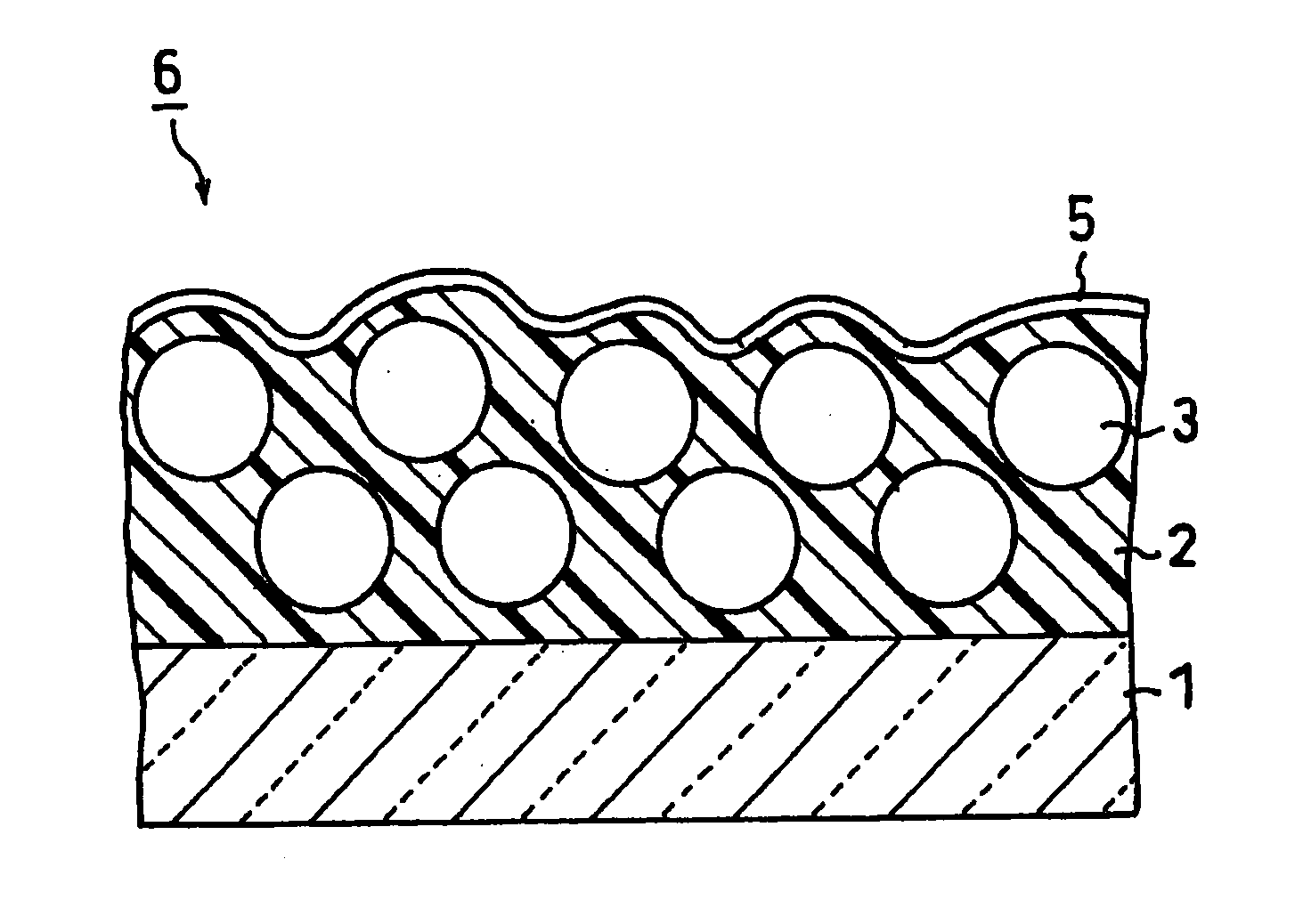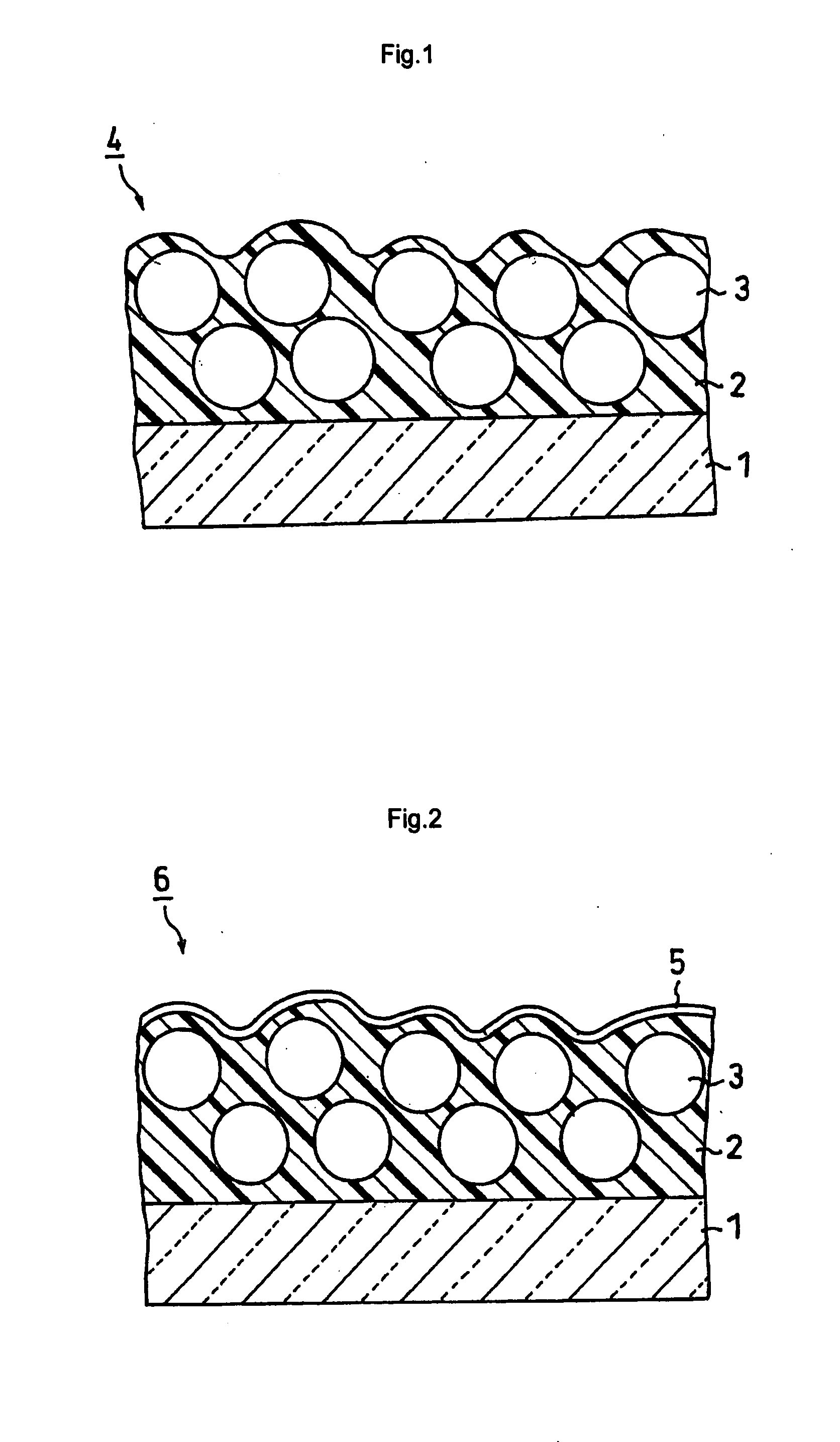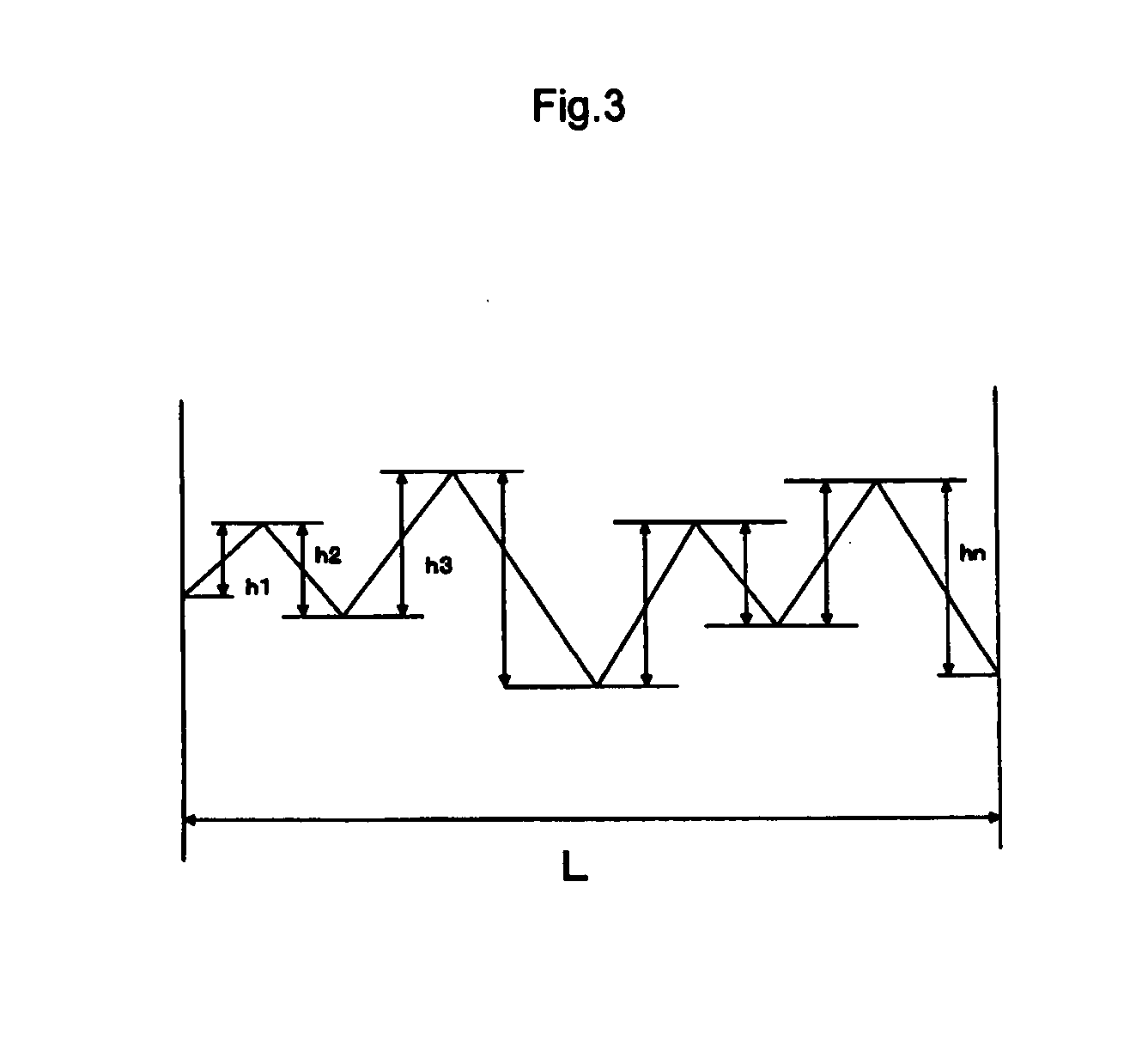Hard-coated antiglare film, method of manufacturing the same, optical device, polarizing plate, and image display
a technology of antiglare film and polarizing plate, which is applied in the direction of roads, instruments, traffic signals, etc., can solve the problems of high haze value, insufficient antiglare properties, and disadvantages of placing such a cover plate, and achieve good antiglare properties, high scratch resistance, and high hardness
- Summary
- Abstract
- Description
- Claims
- Application Information
AI Technical Summary
Benefits of technology
Problems solved by technology
Method used
Image
Examples
example 1
[0106] A resin material (GRANDIC PC 1071 (trade name), manufactured by DAINIPPON INK AND CHEMICALS, INCORPORATED) was prepared. The resin material contained a resin component containing Component A, Component B, Component C and a photopolymerization initiator in a mixed solvent of ethyl acetate and butyl acetate at a solid concentration of 66% by weight. Then 30 parts by weight of PMMA particles with a weight average particle size of 10 μm (refractive index: 1.49) and 0.5 parts by weight of a leveling agent were added thereto. Thereafter, the resin material to which the PMMA particles and the leveling agent had been added was diluted with ethyl acetate in such a manner that butyl acetate : ethyl acetate (weight ratio)=55:45 (i.e. the ratio of ethyl acetate to the whole solvent was 45% by weight) and a solid concentration of 55% by weight was obtained. Thus a hard-coating material was prepared. The leveling agent was a copolymer having a molar ratio of dimethylsiloxane:hydroxypropyls...
example 2
[0113] In this example, a hard-coated antiglare film was produced in the same manner as in Example 1 except that the addition amount of the PMMA particles was changed to 15 parts by weight.
example 3
[0114] In this example, a hard-coated antiglare film was produced in the same manner as in Example 1 except that PMMA particles with a weight average particle size of 15 μm (refractive index: 1.49) were added in an amount of 30 parts of weight and that the solids concentration was changed to 35% by weight.
PUM
| Property | Measurement | Unit |
|---|---|---|
| thickness | aaaaa | aaaaa |
| tilt angle θa | aaaaa | aaaaa |
| particle size | aaaaa | aaaaa |
Abstract
Description
Claims
Application Information
 Login to View More
Login to View More - R&D
- Intellectual Property
- Life Sciences
- Materials
- Tech Scout
- Unparalleled Data Quality
- Higher Quality Content
- 60% Fewer Hallucinations
Browse by: Latest US Patents, China's latest patents, Technical Efficacy Thesaurus, Application Domain, Technology Topic, Popular Technical Reports.
© 2025 PatSnap. All rights reserved.Legal|Privacy policy|Modern Slavery Act Transparency Statement|Sitemap|About US| Contact US: help@patsnap.com



